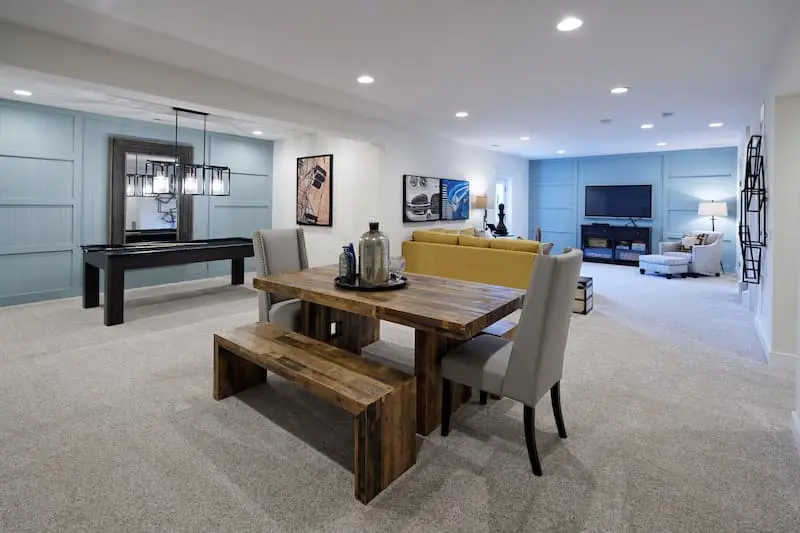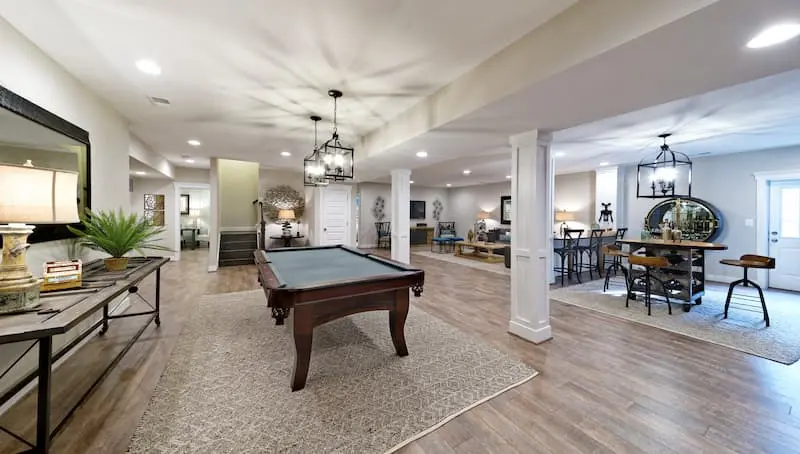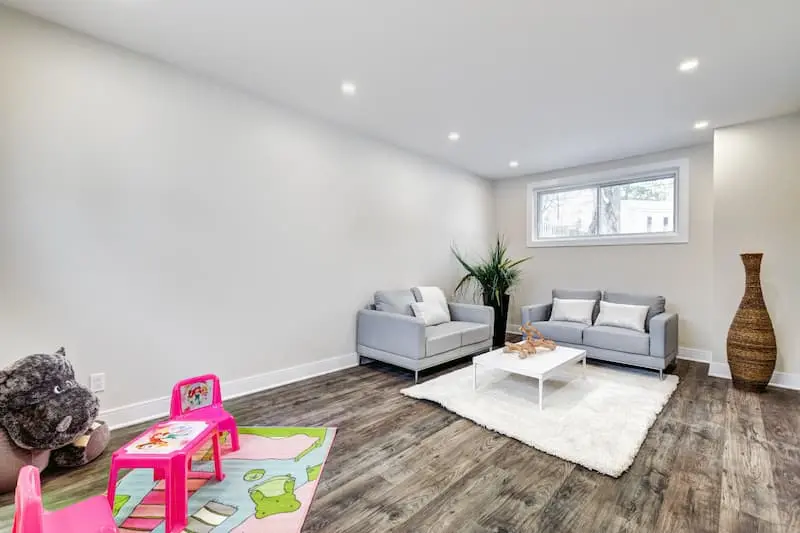
Is it better to finish the basement in a new construction home when it is being built, or is it preferable to wait until later and DIY the job?
Deciding factors include what function the basement ultimately will serve for your household, what your budget is and what are your space requirements to live comfortably.
If additional space is needed in a finished basement to accommodate extra sleeping or living areas, or if you plan to create a rental suite to generate income, then you would likely want to prioritize finishing at the construction phase. If you are simply finishing the basement to improve your home’s functional space, then you might be inclined to wait.
Weigh the costs
The cost of finishing the basement will add to your budget, but it is typically money well invested. A finished basement, particularly with additional bathroom or bedroom space or kitchen (even a wet bar), increase a home’s asset value.
Often, a builder might offer a finished basement as an incentive, or it might be a point for negotiation, allowing you to reduce your overall costs.
Homeowners may find that rolling the cost of the basement in with their new build purchase is easier from a budgeting standpoint too.
“A benefit of finishing your basement during the construction phase is it allows you to finance it as part of your home loan,” letting the homeowner benefit from lower rates and the convenience of a single payment, says Karen Baugher, marketing manager at Brookfield Residential.
It’s more convenient at the construction phase
There is the convenience of being able to use the basement space immediately at move-in if you have the builder finish it during construction, but there is logistical convenience as well, explains Erica Bell, marketing manager at Miller & Smith.
“The builder is doing all the work from permitting, electrical, drywall, as well as all of the required county inspections,” says Bell.
As any homeowner that has lived onsite during a renovation knows, life is disrupted, sometimes significantly, while the job is completed. Having the basement completed by the builder before moving day means not having to live in a construction zone down the road.
Why might I wait and DIY?
If a homeowner is looking to defer costs, waiting and saving up money before starting the project is sometimes preferable.
Some feel that it is better to wait a year or so before finishing your basement in a newly constructed home, so that the home (more specifically the foundation) has a chance o settle properly.
While early cracks are possible in your foundation, due to seasonal changes, depending on your builder warranty, the work in the basement might be covered for damage, so homeowners should weigh that when making their decision.
If you do decide to wait to finish your basement DIY down the road, it is advisable to have rough-ins for plumbing and electrical done at the construction phase regardless, when it is easier and more cost-effective.
Design tips to create a luxe lower level

The lower level is truly a multi-purpose floor.
“You can design a space that fits your needs and those of your family with endless possibilities beyond the typical recreation room, such as adding a guest suite, kitchen, a media room, exercise room, home office, additional storage, custom built-ins, a second laundry room, and more,” says Baugher.
Often, a basement design may involve an open flex space, to serve multiple uses at the same time. You can enhance the functionality and the style of an open plan by defining zones that communicate purpose for each section.
Zones can be created with furniture and accents.
- Cluster a sofa and tufted chairs or recliners around a TV, with a cozy throw rug underfoot for space to relax and watch movies.
- Nearby, you might have a games area, with cubbies and concealed storage for toys, or a reading nook.
- A wet bar can be a focal point, and also provide space for snacks and drinks while in the basement.
- Tuck hand weights in a rack with a yoga mat in the corner, next to the treadmill or bike for an exercise space.
- Have built-in bookcases along a wall, complete with a built-in desk, for a home office area.
Homeowners should also make sure to include smart storage in their basement, as the lower level is often a household catch-all. A dedicated storage space for larger items (i.e. seasonal items, etc.) is desirable, and don’t forget shelving to keep items off the floor as much as possible, protecting them from moisture.
If creating a bedroom space, it is important that you follow the proper code requirements for window and exterior access. Not only is this essential for your household’s safety, you won’t be able to officially declare the room as a bedroom, important when you go to sell your home, or for rental purposes.
Have aspirational basement goals? Trending, luxury upgrades on the lower level include a wine cellar, a sauna/wellness space or a home theater.
Focus on lighting
Basements can be cold and dark, so paying attention to lighting and creating warmth (both literally and visually) are important style considerations.
Access to natural light can be more challenging in a basement, so ambient lighting through the use of well-placed overhead recessed or track lighting (or a mixture of both) is recommended. Add wall sconces or a decorative fixture for some visual interest.
Darker colors and visually heavy finishes (think textured wallcoverings, heavy woods etc.), rely on natural light to amplify a sense of space. If you are opting for these décor choices, introduce light and bright accents for visual balance, such as mirrors, light-colored artwork and throws, and soft-colored furniture.
A fireplace is a cozy focal point and can help regulate humidity.
Carpet underfoot will be warmer, but having a durable, easy-to-maintain flooring such as luxury plank vinyl, is very popular, and a relatively affordable choice.
Air quality & energy efficiency
“A finished basement adds layers of insulation and drywall that help keep the temperature consistent while reducing the energy needed to heat or cool your entire home,” says Bell.
To enhance energy efficiency, upgrade your insulation, ideally with waterproof materials to diminish mold growth. Insulate the sub-floor with high-quality flooring, to further block heat transfer with the cold ground underfoot, also reducing moisture.
Basements can be musty and often don’t have lots of windows to open for ventilation. It’s worth investing in the air quality in the basement to make it most comfortable.
A portable air filter can help improve the air quality, in addition to a filter on the HVAC. Running a dehumidifier can help eliminate musty odors.







